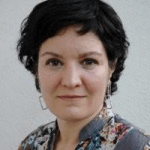How to improve the EU's drinking water supply by monitoring lakes
Monitoring the extent of lake effluents provides valuable information on the risk of pollution and contributes to improving drinking water production and preserving environmental sustainability. This is the aim of the European WQeMS project, which seeks to improve the supply of drinking water to all member states of the EU by monitoring the quality of lake water, through Earth observation tools.
CREAF researchers Joan Masó and Ivette Serral, members of the Grumets research group, are taking an active part in documenting the quality and uncertainty of the data and in integrating the geospatial response of users. The project exploits Sentinel satellite data (belonging to Copernicus, the Earth observation programme of the European Union and the European Space Agency), which provides high accuracy from multi-temporal and high spatial resolution monitoring. The direct benefit of this initiative for people is to have reliable information on the quality of the water we drink. The environmental footprint is also reduced thanks to a production process based on accurate data.
The project addresses slow-evolving phenomena such as geogenic or anthropogenic release of potentially polluting elements into freshwater reservoirs. It also studies the detection of seasonal and annual changes of submerged aquatic vegetation in shallow waters, a highly valuable quality indicator.
Water reservoirs around Europe
The Greek pilot area is the Polyphytos Reservoir located in Northern Greece. It has a surface area of 75 Km2, a drainage area of 5630 Km2 and was created in 1975 following the construction of a dam on Aliakmon River near Polyphytos village, West Macedonia, Northern Greece.
The German pilot areas are Saxony drinking water reservoirs, in particular the Saidenbach, Carlsfeld and Eibenstock reservoirs. The Spanish pilot area is located at the Ojós and downstream reservoirs, exploited to provide surface water to supply Murciametropolitan region. La Contraparada, that supplies around 33% of the city of Murcia (445.086 inhabitants) and Los Guillermos, that supplies the city of Alcantarilla (41.155 inhabitants), are connected to this system.
Lake Pien-Saimaa, part of Lake Saimaa in southeastern Finland, is a medium-size lake with a surface area of ~120 Km2, a water volume of 0,57 Km3, and a mean depth of 4,7 m. Lake Pien-Saimaa is fragmented and incudes several islands. It is located at the water divide and has a small catchment area of 260 Km2.
The project is coordinated by the Centre for Research & Technology Hellas (Greece) and involves the research centres and organisations CREAF, CETAQUA, EMUASA and HIDROGEA (the four representatives from Spain), EOMAP (Germany), AAWA, SERVCO and ENG (the three from Italy), EYATH (Greece), SYKE (Finland) and PHOEBE (Cyprus).







